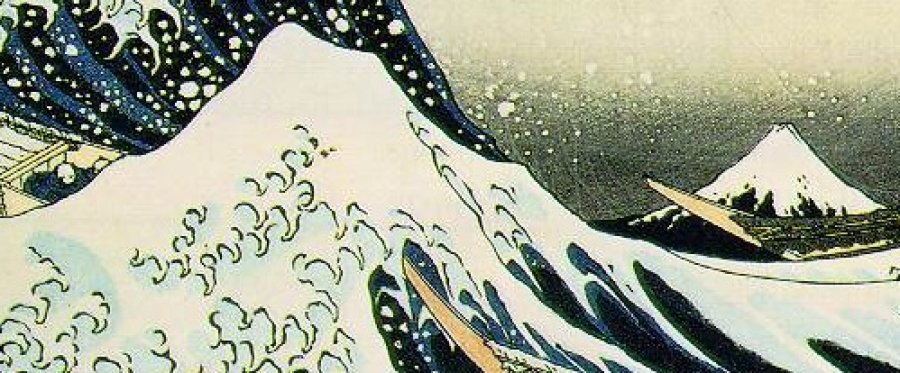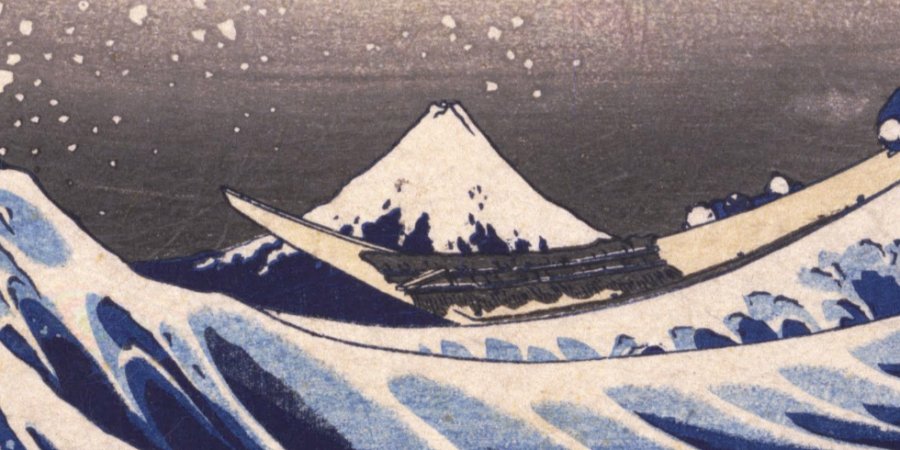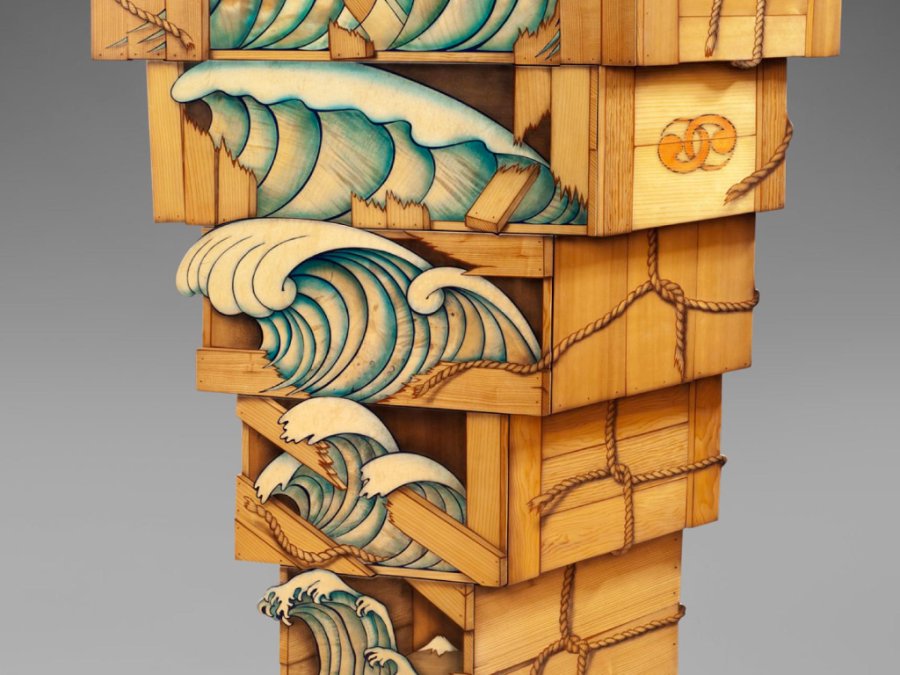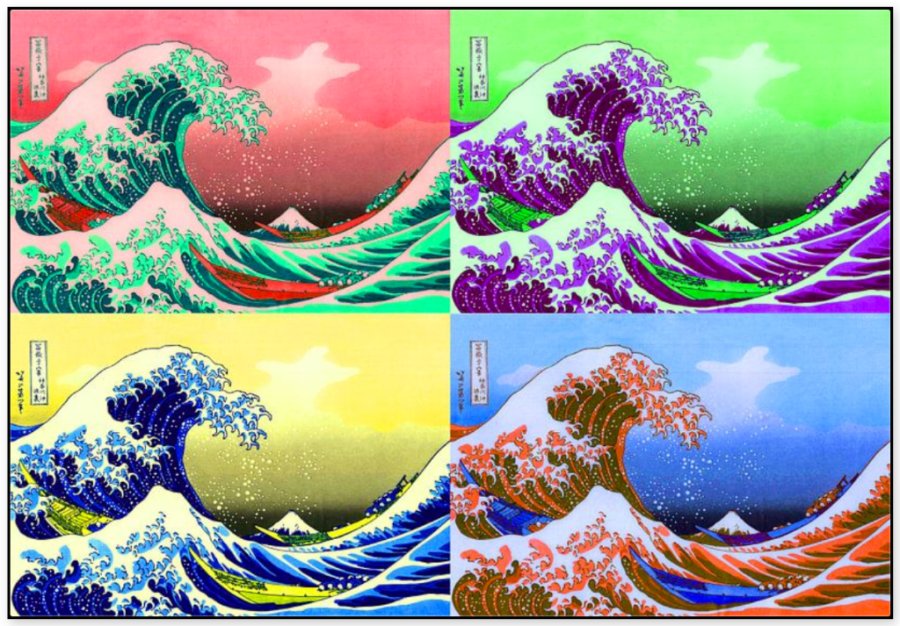The Wave: How a Japanese Artist Captured the Power of the Sea

The world of art is vast and varied, with countless artists leaving their indelible mark on history. Among these, Katsushika Hokusai, a Japanese artist from the Edo period, stands out for his unique style and iconic works. His most famous piece, "The Great Wave off Kanagawa," also known as "The Wave," has captivated audiences worldwide with its powerful depiction of the sea. This article delves into the life of Hokusai, his artistic journey, and the creation of "The Wave."
Who Was Katsushika Hokusai?
 Katsushika Hokusai, born in the Katsushika district of Edo (modern-day Tokyo), Japan, in 1760, was a renowned ukiyo-e painter and printmaker during the Edo period. His father, Nakajima Ise, was a mirror-maker for the shogun, and it's believed that Hokusai began learning painting from him at a young age. Throughout his life, Hokusai went by at least 30 names, a common practice among Japanese artists of the time, but the frequency and significance of his name changes were unique, often marking new phases in his artistic evolution.
Katsushika Hokusai, born in the Katsushika district of Edo (modern-day Tokyo), Japan, in 1760, was a renowned ukiyo-e painter and printmaker during the Edo period. His father, Nakajima Ise, was a mirror-maker for the shogun, and it's believed that Hokusai began learning painting from him at a young age. Throughout his life, Hokusai went by at least 30 names, a common practice among Japanese artists of the time, but the frequency and significance of his name changes were unique, often marking new phases in his artistic evolution.
Hokusai's life was marked by a passion for art and a continuous quest for innovation and mastery. He was married twice, and both his wives passed away prematurely. He fathered five children, two sons and three daughters, one of whom, Oyei, followed in his footsteps to become an artist.
Hokusai's Artistic Journey
Hokusai's artistic journey was a lifelong pursuit of mastery and innovation. At the age of 18, he joined the studio of Katsukawa Shunshō, a master of ukiyo-e, a style of woodblock prints and paintings. Under the name Shunrō, Hokusai published his first series of prints featuring Kabuki actors in 1779.
The death of Shunshō in 1793 marked a turning point in Hokusai's career. He began exploring other styles of art, including European styles he encountered through French and Dutch copper engravings. This exploration led to his expulsion from the Katsukawa school, an event that Hokusai claimed was instrumental in his artistic development.
Hokusai's work underwent a significant transformation as he shifted his focus from the traditional ukiyo-e subjects of courtesans and actors to landscapes and scenes from the daily life of people from various social strata. This shift marked a breakthrough in the ukiyo-e genre and set the stage for Hokusai's most iconic works, including "The Great Wave off Kanagawa."
Throughout his career, Hokusai continuously sought to improve his artistry, famously stating on his deathbed, "If only Heaven will give me just another ten years... Just another five more years, then I could become a real painter." His relentless pursuit of artistic excellence left a lasting legacy and made him one of the most influential figures in Japanese art.
The Artwork: The Great Wave off Kanagawa
"The Great Wave off Kanagawa," also known as "The Wave," is a woodblock print that is part of Hokusai's series "Thirty-Six Views of Mount Fuji." Despite the series' name, it consists of 46 prints, with ten added after the initial publication. The series was created between 1826 and 1833, during the Edo period, a time of great cultural and artistic growth in Japan.
The artwork depicts a giant wave threatening boats off the coast of the town of Kanagawa. While the wave is the central feature of the print, Mount Fuji can be seen in the background. Hokusai has cleverly played with perspective to make Japan’s grandest mountain appear as a small triangular mound within the hollow of the cresting wave. The wave and the mountain, which is a sacred symbol in Japan, are intended to carry contrasting symbolic meanings.
The print measures 10 1/8 x 14 15/16 in. (25.7 x 37.9 cm) and is made using ink and color on paper. The composition of the print is breathtaking, with the wave appearing to tower above the viewer, while the boats below are dwarfed by the wave's monstrous power. The use of Prussian blue, a pigment imported from Europe, adds depth and vibrancy to the image. This color, combined with the dynamic forms of the wave, creates a sense of movement and drama.

The series "Thirty-Six Views of Mount Fuji" was very popular in Japan, and "The Wave" quickly became the most famous image in the series. The print's composition, which places the wave in the foreground, was a departure from traditional Japanese art, which usually depicted the background in greater detail. This innovative approach, combined with the print's dramatic subject matter, made "The Wave" a groundbreaking work of art.
Hokusai's decision to depict a wave may have been influenced by several factors. During the Edo period, travel became popular, and images of the sea and landscapes became more common in Japanese art. Additionally, the sea and waves are common symbols in Japanese literature and folklore, often representing the unpredictable nature of life. By choosing to depict a wave, Hokusai was able to explore these themes while also showcasing his artistic skill and innovative approach to composition.
Interpretation and Analysis of The Great Wave off Kanagawa
"The Great Wave off Kanagawa" is a work of art that has been interpreted in various ways by different scholars and art enthusiasts. The most striking feature of the print is the towering wave that seems to be on the verge of crashing down. The wave is depicted with great detail, with claw-like white foam at its crest, suggesting the ferocity of nature. The boats caught in the wave's path are tossed about, highlighting the struggle of humans against the overwhelming power of the natural world.
In the background, Mount Fuji stands tall and seemingly unmoved by the chaos unfolding in the foreground. The mountain, a symbol of immortality and eternity in Japanese culture, contrasts sharply with the transient and destructive power of the wave. This contrast between the eternal and the transient is a recurring theme in Hokusai's "Thirty-Six Views of Mount Fuji" series.

The wave and Mount Fuji are not just physical entities in this print; they are also symbolic. The wave, with its destructive power, represents the challenges and hardships we face in life. On the other hand, Mount Fuji, with its unchanging and majestic presence, symbolizes hope and resilience in the face of adversity.
The use of Prussian blue in the print was a novel approach at the time. This imported pigment added depth and vibrancy to the image, enhancing the dramatic effect of the wave. The use of this color, along with the dynamic forms of the wave, creates a sense of movement and drama, making the viewer feel as if they are part of the scene.
Hokusai's innovative approach to composition, with the wave in the foreground and Mount Fuji in the background, was a departure from the traditional Japanese art style, which usually depicted the background in greater detail. This shift in focus from the background to the foreground was a significant innovation in Japanese art and contributed to the popularity and impact of "The Great Wave off Kanagawa."
Influence and Legacy of The Great Wave off Kanagawa
The influence of "The Great Wave off Kanagawa" extends far beyond the shores of Japan. Its iconic image has been cited in various forms of media, from book covers and Lego sets to anime and emojis, making Hokusai one of the most famous and influential artists of all time. The print's popularity has not only endured but also grown over the centuries, demonstrating Hokusai's timeless appeal.
Hokusai's influence is evident in the works of many artists who came after him. His contemporaries, such as Utagawa Hiroshige and Utagawa Kuniyoshi, were undoubtedly influenced by his innovative approach to composition and subject matter. His influence also reached Western shores, where his work inspired 19th-century American and European painters. Modern and contemporary artists, including Loïs Mailou Jones and Yoshitomo Nara, have also cited Hokusai as an inspiration.
"The Great Wave off Kanagawa" has been reinterpreted and reimagined by various artists over the years. For instance, John Cederquist's "How to Wrap Five Waves" (1994–95), Roy Lichtenstein's "Drowning Girl" (1963), and Andy Warhol's "The Great Wave (After Hokusai)" (1980–87) all riff on or directly cite the iconic image. Even in the world of Lego, certified professional Jumpei Mitsui recreated the famous print in 2021. These reinterpretations attest to the enduring appeal and influence of "The Great Wave off Kanagawa."

John Cederquist's "How to Wrap Five Waves" (1994–95)

Roy Lichtenstein's "Drowning Girl" (1963)

Andy Warhol's "The Great Wave (After Hokusai)" (1980–87)
The print's influence extends beyond the art world. It has permeated popular culture and has become a symbol of Japan's cultural heritage. It is a testament to Hokusai's artistic genius and his ability to capture the power of nature and the human spirit in a single image.
Conclusion
"The Great Wave off Kanagawa" is more than just a work of art. It is a symbol of the power of nature, a testament to the resilience of the human spirit, and a representation of the cultural heritage of Japan. Katsushika Hokusai, through his innovative approach to composition and subject matter, has created an image that has captivated audiences for centuries and continues to inspire artists and art enthusiasts around the world.
Hokusai's journey as an artist is a testament to the power of innovation, exploration, and the relentless pursuit of one's passion. His masterpiece, "The Great Wave off Kanagawa," is a testament to his artistic genius and his ability to capture the essence of a moment in a single image. From its composition to its symbolism, "The Great Wave off Kanagawa" is a work of art that continues to resonate with audiences, embodying the timeless allure of the sea and the enduring impact of Hokusai's art.
As we appreciate this iconic work, we also pay tribute to the artist who has forever shaped the landscape of art. Katsushika Hokusai's legacy continues to inspire and influence, proving that art is not just a form of expression, but also a powerful force that can transcend boundaries, cultures, and time.